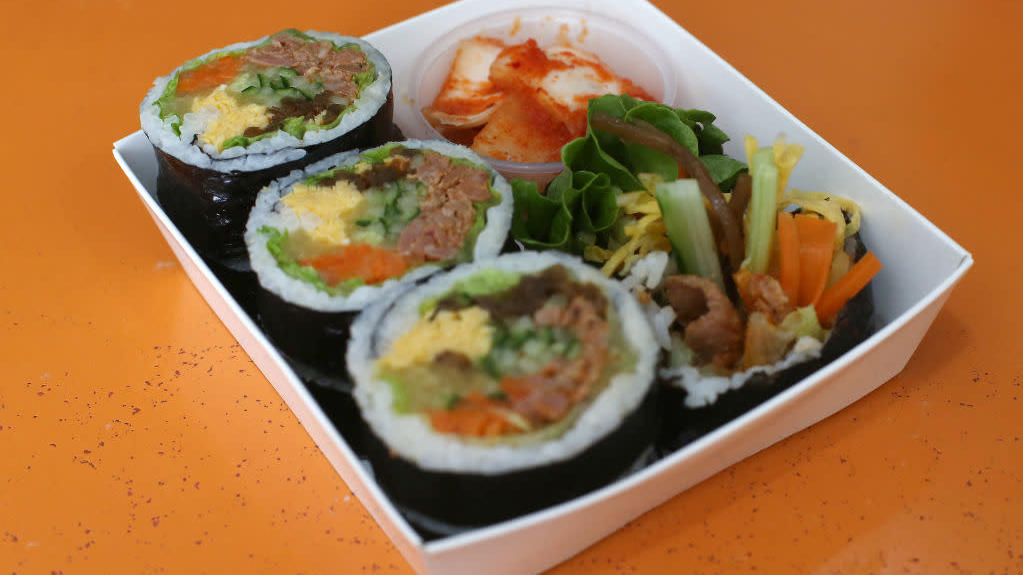Check Out This Illustrated Guide To Kimbap
Today published a really nice illustrated primer on how to make kimbap, which are rice rolls wrapped in seaweed. Kim is the seaweed, and bap means rice. It's Korean convenience and comfort food, and for a lot of people, it's a pretty easy entry into the world of Korean cuisine. If you're new to Korean food, this is definitely one of those things that'll help ease you in; they aren't spicy, the fillings are a combination of fresh or pickled vegetables along with cooked ingredients like Spam, beef, and egg. And don't call it Korean sushi. It's not sushi.
Every family has a different combination for their kimbap. Ours was similar to the one published at Today, which is: carrot, cooked spinach, strips of egg, sweet yellow pickled radish, and a little bit of bulgogi. We were not a ham, Spam, or crab stick family, which are all common variations.
Fillings must be cut or layered onto a rectangle of rice layered on seaweed, before it's rolled up. The rolling part is where the finesse has to happen, as seaweed is very delicate. If it's too dry, it'll puncture or tear as you're rolling, and sometimes just a little tiny bit of pressure in the wrong spot will make it rip. But that's okay. Just remember that in the end, you'll be slicing it into little rounds.
If, like me, you prefer to just buy kimbap, you can usually find it in the prepared food section of most large Korean grocery stores. If your Korean market has a little food counter, you'll see packages wrapped up and ready to eat. You're really going to want to eat them that day, too. They're perfect picnic food, by the way, and since you've got rice, veggies, and protein all wrapped together to be eaten by hand, it's an all-in-one meal that doesn't make a mess. (Now I want some.) But before you get any, do make sure you check out Today's illustrated guide. Not only is it informative; it captures the process perfectly with some really cute art.
